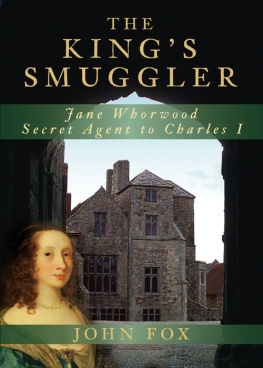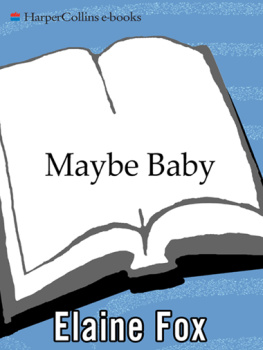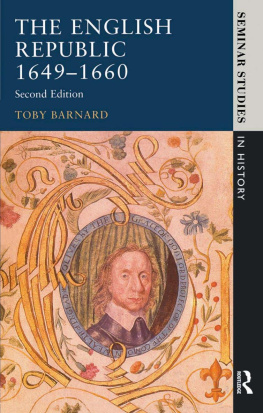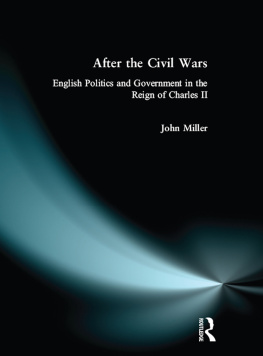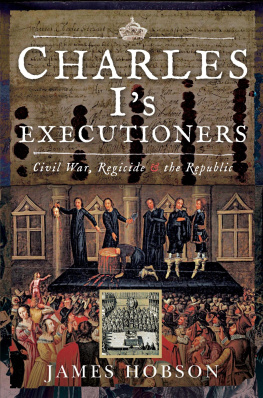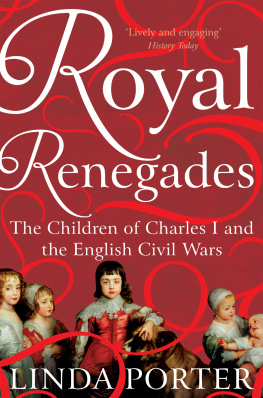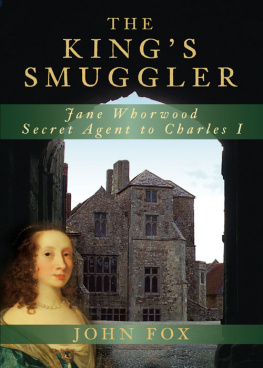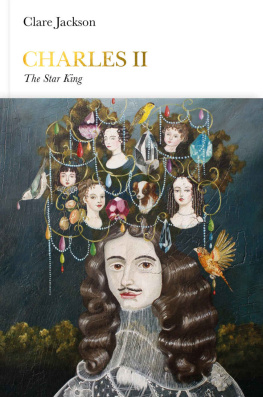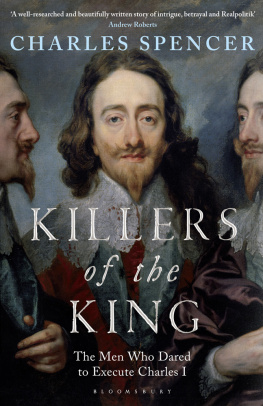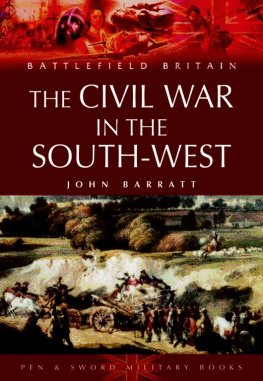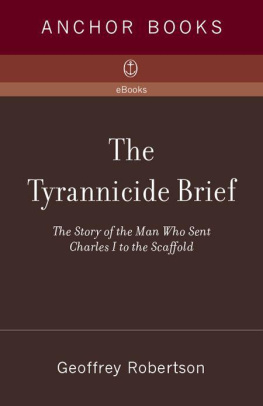For Glen, Karl, Mark, Daniel,
With Ellen and Osian
Our Secret Islanders
Contents
Westminster
Oxford
Newcastle to the Isle of Wight
Oxford and London
My wife and family have put up with Jane Whorwood and Holtons secret island for years. In fact, Holton Parks landscape, evocative and barely chronicled, prompted the search which became this book. The editors of the Oxford Dictionary of National Biography trusted me with their new article, Jane Whorwood , in 2009. Stephanie Jenkins, Kevin Heritage and Nigel Philips enthused me about the Whorwoods, whose former home, Holton Park, now Wheatley Park, hosts a comprehensive school. It enriches their teaching of history. Marian Brown of St Bartholomews church, Holton, and Julia Dobson of Holton village, history whisperers, encouraged me quietly. Caroline Daltons hoard of local wills and Kay Hays midlands discoveries have been unofficial archives, while professional staff ever cheerful at the Bodleian; thoughtful at Lambeth Palace have helped greatly. These include Guildhall Library, British Library, London School of Economics, The National Archive at Kew, National Archives of Scotland, Royal Library at Windsor Castle, municipal and county archives in Westminster, Kingston, Windsor, Oxfordshire, Kent, Surrey, Dover Cinque Ports, Newport IoW and the English and Scottish National Portrait Galleries. Christies auction house also chimed in. I cannot hope to comb the tens of thousands of seventeenth-century wills held in TNA, Kew, let alone those in Edinburgh, but the several hundred which I have explored threw up many unexpected clues to Jane Whorwoods life. No book is a final word. I hope this one is presented humbly enough to welcome finds and revisions, and that the reading is as enjoyable as the search has been. Simon Hamlet and the editorial staff at The History Press have been patient with my afterthoughts and additions.
John Prest, fellow Vetelegan and Balliol historian, read my manuscript, claiming with typical modesty to represent only the mythical general reader. Allan Dell shared his ancestor, William Dell; Emma Clarke-Bolton of Sarah Eastel Locations guided me through the maze which is English Heritage; Robin Harcourt Williams and Victoria Perry on behalf of the Marquess of Salisbury were hospitably efficient; Rosalind Marshall gave freely of her expertise on the Hamiltons and, with Bruce Royan, kindly secured me access to the Virtual Hamilton Palace research project; Mark Bateson of Canterbury Cathedral, Sarah Poynting of Keele University, Malcolm Gaskill of the University of East Anglia, Martin Maw of OUP and my numismatist friends from the Ashmolean (Heberden) Coin Room patiently fielded my sometimes gormless questions; Antony Green, anthropologist and former pupil, combed out red hair for me; Tim Wilson, Curator of Western Art at the Ashmolean, and Philippa Glanville, formerly Curator of Metalwork, Plate and Jewellery at the Victoria and Albert Museum, pondered at really generous length the significance of plate and jewels inventoried at Holton Park in 1684; Tony Lynas Grey of Oxford University Dept of Astrophysics quite literally shed moonlight on the kings letter of 3 May 1648. The curators of Carisbrooke Castle Museum and the owners of Passenham Manor welcomed us warmly; Maureen Jakob has familiarised our family with Hampton Court Palace across half a century, and is thanked with love. Kevin Heritage produced the genealogies. Andrew Kinnier introduced me both to Cromwells Sydney Sussex College and James Maxwells Inns of Court. Martin Roberts, a valued colleague of many years and a historian of repute, quietly and tangibly encouraged my history hinterland. I thank him warmly for this and much else.
The books shortcomings and mistakes are mine, as are its idiosyncrasies. I use [parentheses] to clarify opaque period writing. I replace civil war with the War and Wartime: even contemporaries thought that civil was inappropriate to describe the brutalising of the community. I cite Mrs in full, to remind that Mistress was stronger than the muttered abbreviation of today, and indicated rank; Mr (Master) was also stronger, but its full form is dead beyond reviving. John Taylor the Water Poet, whose biographer calls him a genial companion, has been adopted as company through the book, lightening up Wartime Oxford, romanticising the Thame at Wheatley Bridge, enjoying beer and oysters on the Medway, and kissing the kings hand at Carisbrooke. Wartime was not all sombre and Taylor made contemporaries laugh, like the pub landlord he was. Finally, in Chapter 6, I have dared to reconstruct from evidence, for the first time, the overlooked Cromwell family wedding in the Whorwood house at Holton. It marked the first anniversary of Naseby and allowed the commanders of the new-modelled Army an occasion to leap and smile when the War seemed to be over. Oxford was about to surrender, and Naseby had been pivotal in the victory. The wedding by the new Parliamentarian rite was a cameo of national issues. It was also a dramatic Whorwood event in which the Whorwoods, Jane and mother-in-law Lady Ursula, the recusants daughter, were completely silent participants. If only for that, it deserves its airing here.
John Fox
| APC | Acts of the Privy Council |
| CCAM | Calendar of the Committee for the Advance of Money |
| CCC | Calendar of the Committee for Compounding (and Sequestration) |
| CSP | Calendar of State Papers |
| HER | English Historical Review |
| HCJ | House of Commons Journal |
| HLJ | House of Lords Journal |
| HMC | Historical Manuscripts Commission (Reports) |
| LSE | London School of Economics |
| Ms(s) | Manuscript(s) |
| NAS | National Archives of Scotland |
| ODNB | Oxford Dictionary of National Biography (New DNB) |
| PROB | Probate |
| RPCS | Records of the Privy Council of Scotland |
| SP | State Papers |
| TNA | The National Archive (formerly PRO, Public Record Office) |
| 1603 | James VI of Scotland succeeds Elizabeth I as James I of England |
| 1612 | Jeane Ryder born to Scots courtiers at Westminster |
| 1615 | Brome Whorwood born at Holton Park, Oxfordshire |
| 1617 | James I and VI visits Scotland; William Ryder dies |
| 1619 | Jeanes mother remarries to James Maxwell, Black Rod. Queen Anne dies |
| 1625 | Charles I succeeds James I; Maxwells influence grows at court |
| 1625 | Parliament removes to Oxford to avoid plague |
| 1628 | Buckingham, favourite of Charles I and James I, assassinated |
| 1629 | Parliament dissolves itself; King Charles rules alone until 1640 |
| 1634 | Brome Whorwood marries Jeane Ryder (Jane Whorwood) |
| 1636 | The court and Archbishop Laud visit Oxford |
| 163941 | Charles I defeated in two Scottish or Bishops wars |
| 1640 | Short Parliament (1640); Long Parliament (164048); Rump (164853; 165860) |
| 1642 | Charles declares war against Parliament, August; Edgehill battle, October |
| 16424 | Jane smuggles gold and intelligence into Oxford, Charless war capital |
| 1644 | Scots Covenanting Army invades in support of Parliament |
| 1645 | Parliament abolishes Anglican Church and re-models Army; Naseby battle, June |
| 1646 | Charles flees Oxford; Scots take him to Newcastle; Bridget Cromwell marries at Holton; Oxford surrenders; end of first civil war |
Next page
